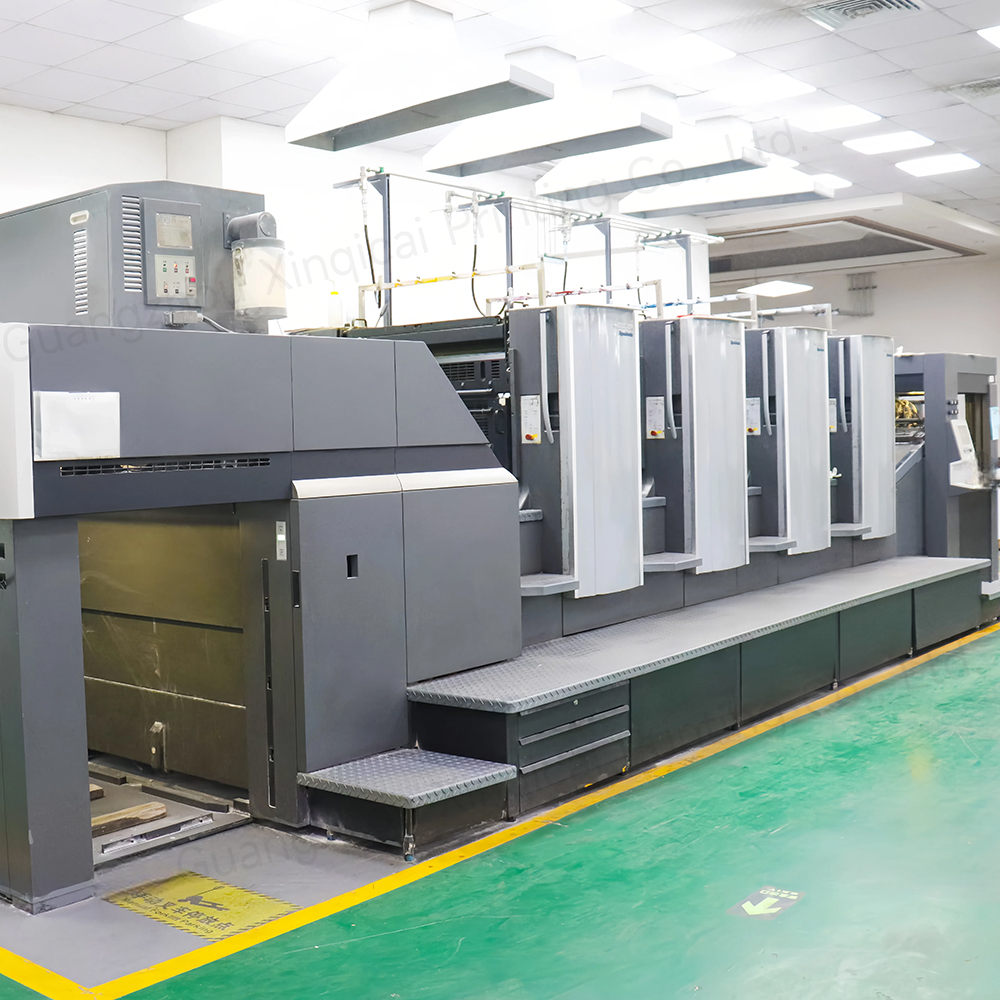
1. Deepen Primary Colors
1) Deepen various solid color blocks, such as red, green, and blue for newspaper headlines and logos, as well as for basic colors that don't require gradation. Generally, clients demand rich, vibrant colors for these headlines and logos. Theoretically, this maximizes the offset ink's maximum solid density to achieve maximum saturation. Although 95% dot density increases to 100% after printing, the effect is different from 100% solid printing. 95% dot density reaches solid density only within 95% of the dot area. While the increased 5% area contains ink, the ink density is thinner. The ink density of 95% dot density increased to 100% does not have the richness and vividness of 100% solid density.
2) Colors such as the blue sky, ocean, green leaves, and lawns in landscape photography have become fixed concepts in people's minds. Therefore, when processing colors, the color volume of the C plate should generally be deepened relative to the required color volume of that hue. For greens like leaves and lawns, the Y plate should also be deepened to achieve a saturated and vibrant green. For basic colors requiring depth in red, green, and blue, the optimal saturation configuration, based on the color cast and graying characteristics of typical offset inks, is:
Red = M95% + Y85%
Green = Y95% + C85%
Blue = C95% + M80%
3) Dot value configuration for a vibrant blue sky: First, Y is omitted below 40% of the C plate, making the sky blue more vibrant. Second, some Y is added above 50% of the C plate, preventing the blue from appearing reddish and giving the blue a calm, rich texture. Furthermore, since the sky blue ink currently used has a reddish tint, the red is intentionally reduced to enhance the beauty of the blue sky.
4) The red leaves of Xiangshan Mountain in autumn can be rendered even redder than they actually are. The depth base color Y is set at 100%, M at 95%, and C is omitted. This makes the leaves appear exceptionally vibrant under sunlight, creating a pleasant sense of transparency.
This shift in color approach transcends traditional color matching methods and highlights the aesthetic value of color in visual art.
2. Maintaining Gradation in Deep Base Colors
1) The dot tone value range for deep base colors is 65% to 90%. Because the dot size increases significantly above 80%, gradations tend to blur. Therefore, for base colors that require gradation in these areas, the gradation should be maintained while emphasizing sufficient solid density. Avoid emphasizing solid density saturation, which could cause gradations in the base colors. Key points: For deep base colors that require gradation, particularly those above 80%, appropriately reduce the color volume to create a distance between them and the solid color blocks. This ensures sufficient solid density while maintaining gradation.
2) When processing colors, it's difficult to balance vibrant and saturated colors with the gradation of light and dark. To preserve the gradation of light and dark, complementary colors must be used. However, using complementary colors in Shenzhen packaging printing reduces color vividness and increases grayscale. To achieve vibrant colors, use fewer complementary colors, which in turn affects the gradation of light and dark. For time-sensitive and packaging products, emphasize saturated and vibrant colors, while adjusting the gradation of some colors. This results in a strong sense of color and a good visual effect in the final printed image. The key lies in mastering the "degree," and this grasping of "degree" reflects the operator's aesthetic level and directly affects the artistic effect of color.
3) The gradation of depth in basic colors is primarily expressed using primary color plates. For warm tones like red and orange, the Y and M color plates are used; for cool tones like green and cyan, the C color plate is used. Therefore, it is important to emphasize the gradation of the primary color plates to realistically convey the layered characteristics of the real object.
4) The basic colors in the midtone area are sufficient. The mid-tone area, with a dot tone value range of 35% to 65%, forms the main body of most objects and is a key area for color processing. To achieve optimal saturation in this area, the key is to deepen the hue by approximately 5% based on the required saturation. For example, the bright mid-tone M color of a red flower requires a 40% saturation, which can be deepened to 45% for a more saturated and vivid red.

